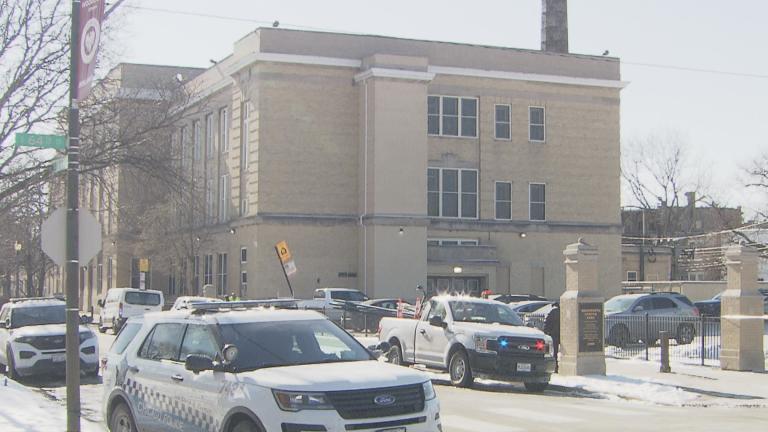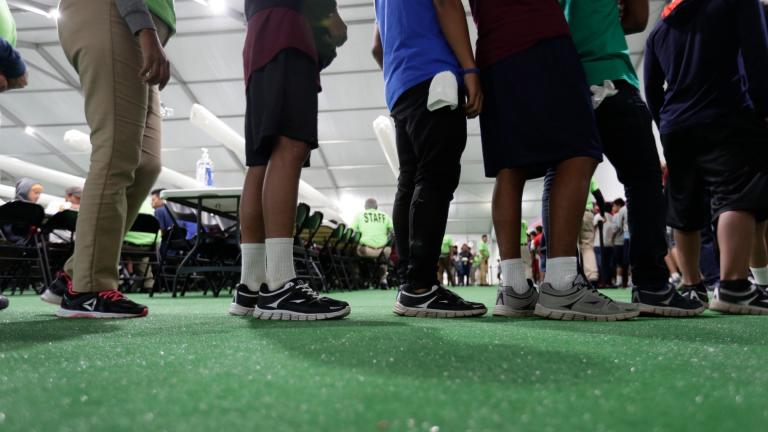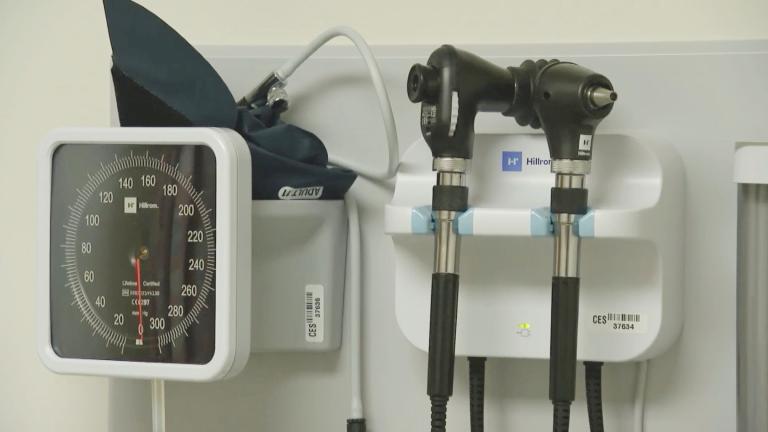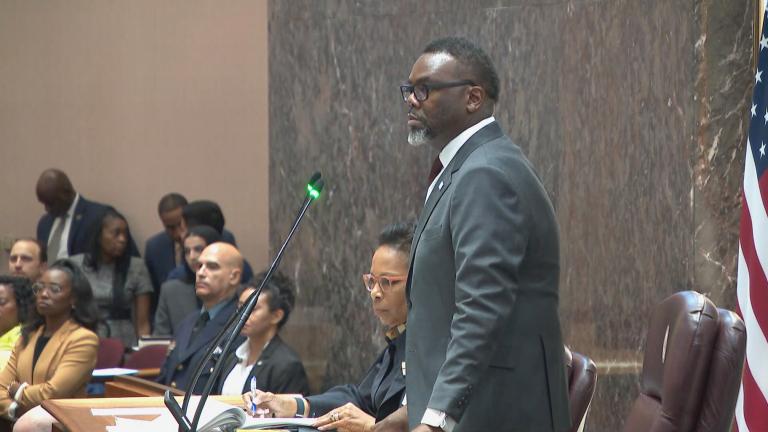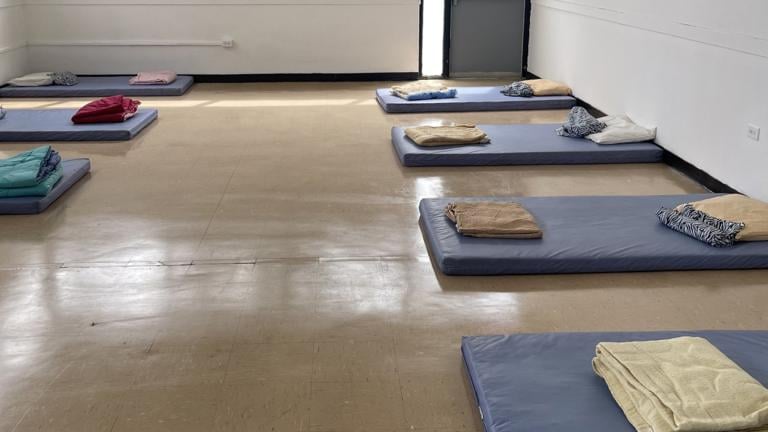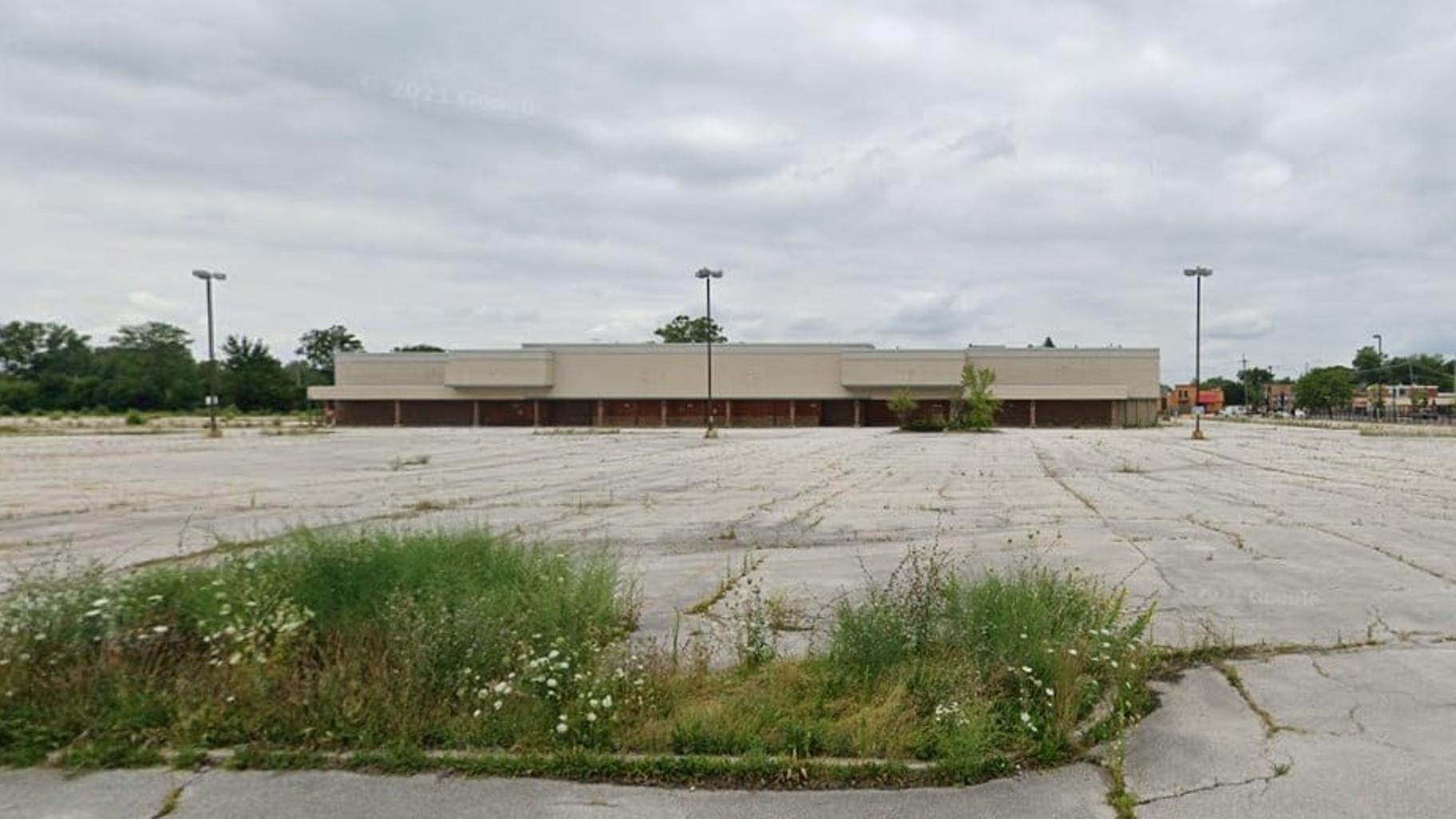 The 67,000-square-foot vacant former grocery store and the surrounding 6.5 acres of land on the border between Morgan Park and West Roseland. (Credit: Google Street View)
The 67,000-square-foot vacant former grocery store and the surrounding 6.5 acres of land on the border between Morgan Park and West Roseland. (Credit: Google Street View)
The site at 115th and Halsted streets set to become a so-called “winterized base camp” for migrants may be contaminated with pollutants from an underground fuel oil tank as well as from a defunct dry cleaners and a shuttered gas station, according to an environmental study released Monday by Mayor Brandon Johnson’s office.
The report from Lisle-based A3E Consulting, dated Oct. 31, recommends “additional investigation” of the 6.5 acres of land surrounding a vacant Jewel-Osco grocery store on the border between Morgan Park and West Roseland once known as the Halsted Indoor Mall before it is used to shelter migrants.
Ald. Ronnie Mosley (21st Ward) did not immediately respond to a request for comment from WTTW News. City officials can only use the site to shelter migrants until Nov. 1, 2024, when the land is set to be redeveloped into the Morgan Park Commons, an affordable housing, retail, entertainment and new park space on the site under the terms of the city's November agreement to purchase the land for $1.
The scope of that additional study is unclear, including how much it would cost the city and how long it would take.
Mosley said he wants the city make a final decision on whether to move forward with plans for a base camp on the site in order to allow the redevelopment effort to move forward, which would also require additional environmental testing.
Mosley said he was confused about why he just saw the environmental study Monday, if it was completed by the end of October.
A 275-gallon underground fuel oil storage tank was installed on the site in 1952, and there is no evidence it was removed, according to the report.
In addition, the site was home to Victor’s Valet, a dry cleaners, occupied the site in 2011. The chemicals used to clean clothes without water could represent a hazard to residents of the site if they were not disposed of properly, according to the report.
The property to the east of the site, which was once known as the Halsted Indoor Mall, was home to gas stations between 1960 and 1978. It is unclear whether the station’s underground gas tanks were removed, according to the report.
Some of those findings will be news to nearby residents, Mosley said.
City officials announced plans to build the massive base camps in September, at a time when more than 3,000 men, women and children were being forced to sleep on the floors of police stations across the city and at O’Hare Airport. Nearly immediately, Johnson faced a torrent of opposition to the plan, including intense criticism from his allies on the Chicago City Council and Gov. JB Pritzker.
Contaminated soil derailed plans to open a base camp at 38th Street and California Avenue, the only other site identified by city officials as suitable for the massive tents that could house as many as 2,000 migrants for up to 60 days at a time.
Mercury was found in one location on the Brighton Park site, while the organic compound bis(2-ethylhexyl)phthalate was identified in another spot, with evidence of two semi-volatile organic compounds and four metals that exceeded limits considered safe for residential use discovered at several locations, according to the report.
Those findings prompted Pritzker to drop plans to use $65 million in state funds to build and operate that camp, even after Johnson said the site was safe to use as a temporary shelter as long as contaminated soil is removed and a stone barrier of at least six inches covered the entire property.
The urgency of opening at least one winterized base camp receded in the last several weeks as the number of buses sent to Chicago from Texas by Republican Gov. Greg Abbott slowed, and Johnson ramped up efforts to partner with churches to shelter migrants.
By Monday morning, approximately two dozen migrants were living at the police station in Pilsen, with another 240 at O’Hare International Airport, city officials said.
Since August 2022, more than 600 buses have arrived in Chicago, carrying nearly 26,000 people, nearly all of them who fled economic collapse and political turmoil in Central and South America. More than 80% have arrived after Johnson was inaugurated, according to city data.
Nearly 14,000 migrants are living in 27 city shelters, which faced new scrutiny Monday after the death of a 5-year-old from an unidentified illness.

